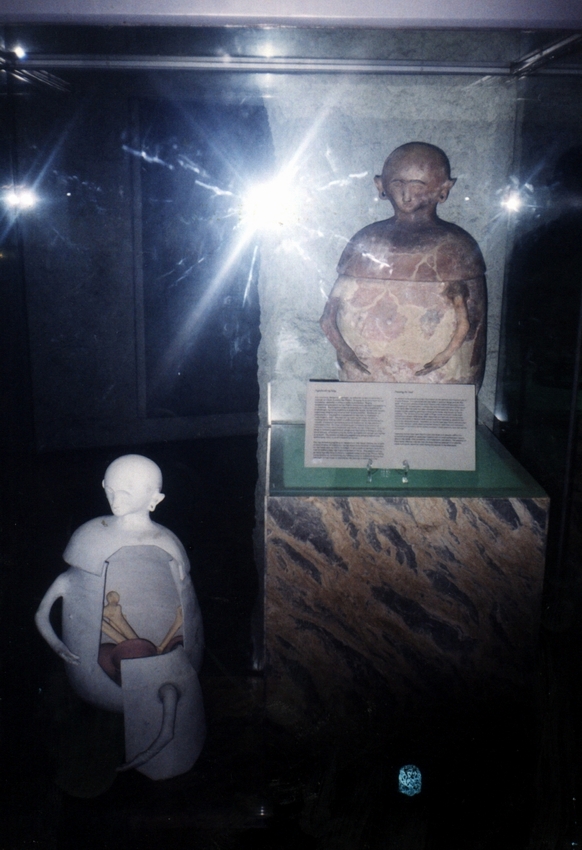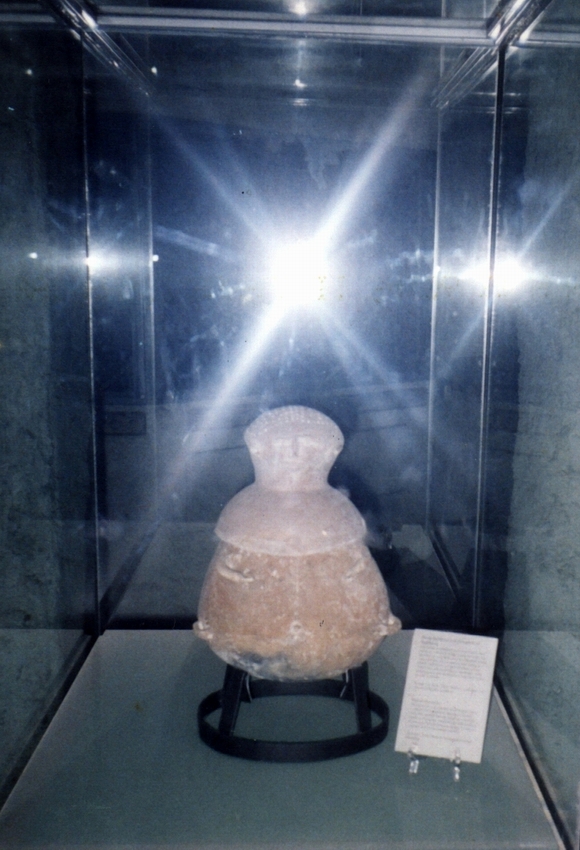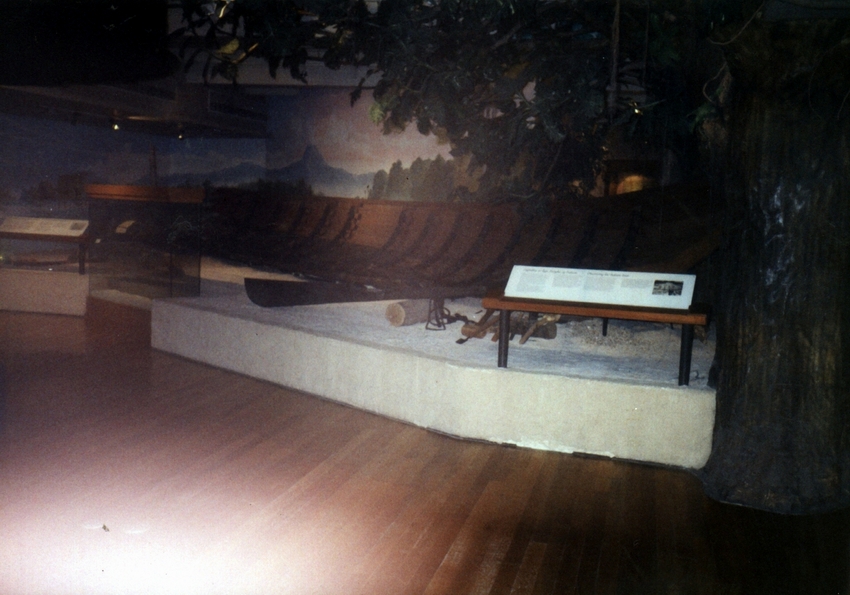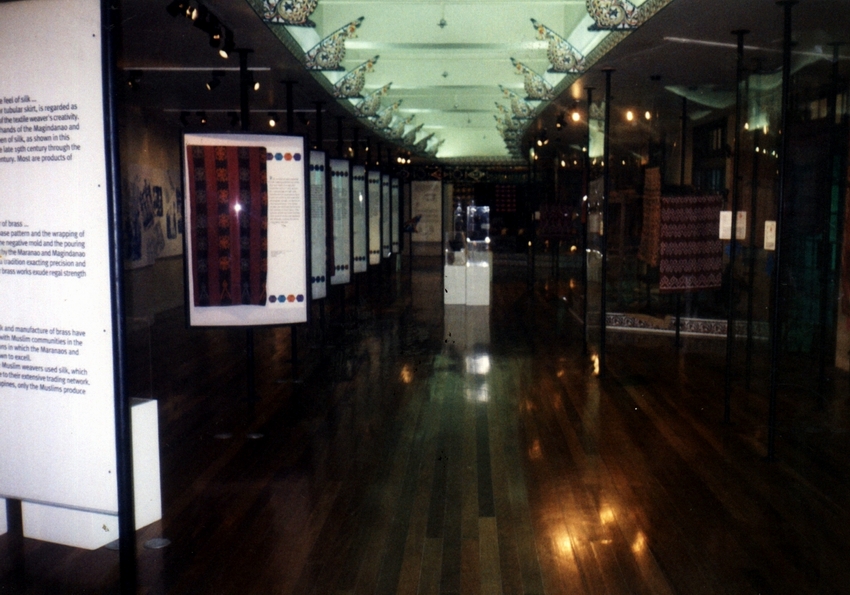After a 20-year hiatus, I returned to my old training ground (the National Museum was my college thesis) to see for myself how the rehabilitated National Museum was faring and to write an article about it. I sought the assistance of Ms. Francis Caberoy (Assistant Chief of the Museum Education Division) and Ms. Phoebe Espinas (Information Officer 3), before I was given the necessary passes and permits to photograph.
Housed in the former Finance Building, this museum was the second building pledged to the National Museum. As a cultural center, it takes the lead in the study and preservation of the nation’s rich artistic, historical and cultural heritage in the reconstruction and rebuilding of our nation’s past.
The impressive, Neo-Classic-influenced, 5-storey Finance Building was built in 1940 on the same Federal architectural style concept of American architect and Manila and Baguio City planner Daniel H. Burnham. Its construction was implemented by Arch. Antonio Toledo of the Bureau of Public Works. He was responsible for the construction of Manila government structures under the American colonial regime.
Trapezoidal in plan, its planning called for a vast extensive system of parks and walkways with views of Manila Bay. The building was barely finished when World War II broke out on December 7, 1941. During the Liberation of Manila, the building, because of its strategic location, became a Japanese stronghold that was intensely bombarded by the Americans. Its recapture on March 3, 1945 actually marked the end of the Battle of Manila. After the war, the building was rebuilt by the company of A.M. Oreta. Half a century later, during the centennial celebration of Philippine independence, the building was refurbished and inaugurated to house the Museum of the Filipino People.
The building has approximately 7,000 sq. m. of display area and it houses anthropology, archaeology and history collections. At the ground level are the Gallery of the “Best of Philippine Art,” four seminar rooms (Cabinet Ladies Foundation, Nestle Philippines, SGV & Co. and the SSS) and the Pamana Museum Shop, a souvenir shop. At the open court is an actual Ifugao House (Fhaley Ad Henenga) from Mayoyao presented by Petron Corporation.
The “Treasures of the San Diego” are are displayed at the 4 seminar rooms at the ground floor (Cabinet Ladies Foundation, Nestle Philippines, SGV & Co. and the SSS) and at Asianbank Corp./A. Soriano Corp./Phinma Group Gallery at the second floor. The San Diego’s 5,000 artifacts on display represent a time capsule of the known world at that time. Its recovery confirmed the Philippines’ reputation as a rich ground for underwater archaeology. And why not? Records show that 59 galleons alone sank in Philippine waters. Of this total, only three – the Nuestra Senora de la Vida, the San Jose and now, the San Diego, have so far been retrieved.
Navigational instruments recovered from the San Diego are a major scientific find as they represent a much delayed, but altogether appropriate, reply to Chinese inventions such as the compass, an 11th century Chinese innovation.
One of the most important treasures recovered from the San Diego is an old astrolabe, one of only 67 that have been preserved and, more uniquely, 1 of 5 oldest as well as 1 of 6 or 7 known examples dating before 1600. As one authority exclaimed, “the entire cost of the whole expedition was worth that one piece of nautical antiquity.”
Called the oldest scientific instrument in the world, the astrolabe is used to determine latitude accurately by measuring the angle a heavenly body (sun or stars) makes with the horizon. It is derived from the planispheric astrolabe invented by Greek mathematicians in ancient Alexandria (Egypt).
The astrolabe appeared in Europe in the late fifteenth century, first used in Portugal and adapted by nearly all Western mariners. The San Diego astrolabe weighed 2,434 gms. had a diameter of 182.5 mm. and was 17 mm. thick at the top and 18 mm. at the bottom.
The absence of a date and signature on makes it impossible to determine the astrolabe’s geographic origin or date of manufacture. The instrument, however, bears a remarkable resemblance to the Valencia astrolabe at England’s Greenwich Maritime Museum (which almost certainly came from the Spanish Armada). The only difference is that its spokes have footers and no handles. Its similarities lead us to believe that they were made in the same workshop.
Another important discovery was an astronomical ring, the only known example of this type, in terms of both mechanism and shape. Its exact function has not been determined; although it is known that the position of the Philippines on the map was calculated using a similar instrument.
A compass was also recovered with its glass intact and the original liquid still present inside the glass casing. Other navigational instruments recovered include sounding weights and a ruler which were more suitable for reading charts and navigating in coastal waters than for open ocean voyages.
According to the ships inventory list, the San Diego brought 14 cannon from the fortress of Manila. They were outstanding examples of bronze casting techniques and gave an excellent overview of artillery at the end of the 16th century. Of the 14, 7 are dolphin-types (with handles shaped like dolphins), 2 are foot-types, 1 lion-type, 1 box-type and 2 are unidentified. Their maximum lengths range from 208 to 359 cms., their mouth diameters range from 14.5 to 27.5 cms. and their bore diameters range from 7 to 18 cms.. They were fabricated in the Philippines, Flanders (Netherlands) and Portugal.
The cannons from Portugal were more advanced and were called breech loaders. Eleven of the cannon are displayed at the museum’s ground floor and the rest at the second floor. There were 8 grades of caliber which required different types of ammunition. There were 197 cannonballs recovered. The iron cannonballs were for the smaller cannons and the stone for the bigger ones. The cannonballs range from 6.5 to 14 cms. in diameter and weighed between one and 7 kgs..
Aside from the cannons, little remains of ship’s offensive weaponry: arquebuses, muskets and swords. Arquebus spring shots (lead, brass or iron wire) range from 0.4 to 3.5 cms. in diameter. Also found were a gunpowder shovel and cases for musket shot made of lead that were attached together by brass coil. A glimpse of the soldier’s outfit came from 3 morions (military helmets of copper alloy), pieces of armor (shoulder and neck armor, breastplate), sword handles, belts and shoe buckles. Also a ball mold to press musket and arquebus balls was found.
The possibility of high ranking Japanese samurai (possibly mercenaries) on board the ship can be seen from a pair of recovered Japanese bushi swords, 2 dozen sword decorative elements, a writing set with a rare aubergine (fruit of the eggplant)-shaped porcelain water dropper and two stones for mixing ink.
It must be remembered that the San Diego was a galleon (trading ship) before she was pressed into service as a battleship by Antonio de Morga. As preparations were being rushed to meet the Dutch, there had been no time to unload the bulky porcelain cargo in the main hold and these all went down with the ship. To the Western world, Chinese porcelain seems to be the most accurate reflection of China and it was an important part of trade in Manila.
The San Diego carried a cargo of assorted ceramic objects that survived in a much better condition than the metal objects. A majority of the recovered ceramic ware was intact and many pieces were restorable. They include a precious cargo of more than 500 fine, exceptionally strong, blue and white China porcelain. They date from the Wan Li Period (1573 to 1619) of the Ming Dynasty (1368 to 1644) and come in the form of plates, dishes, bottles and kendis (pitchers). This special class of pottery is made from kaolin from Jiangxi, near the city of Jingdezhen in China. Their white background is decorated principally with cobalt oxide and applied with a brush under a glaze.
It is believed that the San Diego also carried over 750 Chinese, Thai, Burmese and Spanish or Mexican stoneware jars to store food, water and cargo as well as serve as ballast. They date from the sixteenth century and many have applied handles where a rope could be strung to secure and protect them from breaking. Animal bones from preserved meats as well as coconut shells and seed (prunes and chestnuts) remains have been found inside the jars.
There are also over 70 Philippine-made amphora-like earthenware jars influenced by European stylistic forms and types. They were originally used to transport olives and oil, but they also have been used to hold wine, preserved fruit or the tar used to caulk the ship. Their capacity varied from 4 to 15 liters (4.2 to 15.9 quarts) and they weighed between 3 and 9 kgs. (6.6 to 19.8 lbs.).
Many recovered artifacts provide fascinating insights of life on board a galleon. Recovered were a piece of rope made of Manila hemp; a wooden pulley; writing implements (3 inkstands, 2 powder cans with powder used to dry the ink, a metal pen, etc.); a silver candle snuffer; a bronze candlestick; ivory and wood chessmen; locks; keys; a well-preserved wood pole with a hammock tied to it; a hammer; a glass plate with wooden frame (probably from the captain’s cabin); barber’s kit (2 razors, various weights, remains of a beam balance); and a block of hardened resin that was noted, in historical accounts, to have been used in caulking and for making fire in stoves. Also recovered were two coral-encrusted iron anchors.
A meager haul of 8 gold artifacts was also recovered. They provide a rare look at ornaments of 16th century Philippines and, ultimately, an insight into the Spanish and Filipinos of that time. One of the artifacts is an Asian coin while the rest are articles of personal adornment or functional objects crafted in gold: a neck ring of gold wire with scrolled clasp; a 78-inch long, multiple loop-in-loop necklace woven with fine gold wire; a dress ornament; a book clasp with pin for girdle prayer book; a ring with granulation; an oval document seal cap of Morga (which “seals” the positive identification of the wreck); and a rosary with ivory beads and crucifix and chain of gold wire. None were stamped or hallmarked.
The rosary, girdle prayer book and the ring may have been made for women. Were there women on board the San Diego? Initial studies on human bones recovered from the site indicate that some of them may have been females. Or were they good luck keepsakes given by shore-bound lovers? God only knows.
A total of 428 sixteenth century silver coins, as well as six small and one big cluster of cemented coins, were recovered. Most are of uneven roundness and flatness and its markings and designs are unclear. Struck the year before its sinking (either in Mexico or Potosi), the majority are 1, 2, 4 and 8 reales of American origin, an indication of the lively trade between New Spain (Mexico) and the Philippines.
The “Best of Philippine Art” Gallery houses selected art pieces from the National Museum Collection. They include 3 Juan Lunas, 3 Hidalgos, works of 6 National Artists (Napoleon Abueva, Fernando Amorsolo, Victorio Edades, Carlos V. “Botong” Francisco, Cesar Legaspi and Vicente Manansala), a bronze (Mother’s Revenge) and terra cotta (El Ermitanio) sculpture by Jose Rizal, other sculptures in glass (Ramon Orlina), adobe (Abueva), bronze (Abdulmari Imao, Solomon Saprid) and wood (Abueva, Jose Alcantara, Graciano Nepomuceno) plus paintings by other noted masters.
Before the coming of the Spaniards, merchant vessels were already sailing through Southeast Asia, charting new routes for trade and commerce and venturing into the unknown. The Exhibit on “Five Centuries of Maritime Trade,” at the museum’s second level, reaffirms this active interchange that existed among peoples of the region. On display are artifacts recovered from sunken Chinese merchant junks at five wreck sites. The blue and white Ming Dynasty chinaware from the San Isidro Wreck Site were recovered at 50-m. deep waters off the coast of Zambales.
The Lena Shoal artifacts, numbering 5,000 pieces, date from the 15th to early 16th century and were excavated in 1997 at the north of Palawan. They include elephant tusks, small bronze cannons and greenware (celadon), 2,183 of which were recovered whole, 213 slightly damaged and 1,501 heavily damaged.
The pre-colonial Pandanan artifacts, recovered in 1993 off Pandanan Island in Southern Palawan, date from the Long Ye Period (1403-24) as seen from a Chinese copper coin recovered. They consist of 4,722 pieces (80% of which were intact) recovered after 947 dives totaling 1,044 hours.
The Investigator Shoal artifacts, dating from the 12th-13th century, were found under three to four-meter deep waters in a coral environment. It had a cargo of greenware and quingbai in the form of cups, saucers, bowls and plates. The junk was probably used for the illicit trade of smuggling as 54 kgs. of bronze bracelets were hidden in a large jar under a layer of tea.
The Breaker Reef artifacts, mostly copper items, date from the late 11th to early 12th century (1004-1100) and were found off the western shore, halfway along an island on a reef known as “Breaker” in Northwest Palawan.
The museum’s main attraction is the “Story of the Filipino People,” a permanent, 1,600-sq. m. exhibit located at the third floor. It provides a thematic “story-telling display” of the museum’s anthropology and archaeology collections. Anthropology deals with the study of the structure and evolution of humans as animals while archaeology deals with the study of human history and prehistory through excavation of sites and analysis of physical remains. The triumphant partnership between Filipino and foreign researchers has reaped dividends for Philippine archaeology.
On March 28, 1962, American Dr. Robert B. Fox (National Museum Anthropology Division Head) and Manuel Ma. Santiago (also of the National Museum), discovered the fossilized Pleistocene skullcap of the “Tabon Man” (actually a woman’s) in Tabon Caves in Quezon (Palawan). It was carbon-dated to be between 22,000 to 24,000 years, the oldest known habitation site and trace of man in Southeast Asia.
The archaeological excavations in two of the three limestone caves of Bato Caves in Brgy. Bato in 1959, also by Dr. Robert Fox, have unearthed Late Neolithic artifacts dated to 100 B.C. such as stone tools, blades, bowls, drinking cups, burial jars, strung shell beads and nautilus shell spoons.
Another extensive archaeological project was the discovery in Calatagan (Batangas) of over 500 pre-Hispanic (late 14th-early 16th century) Tagalog grave sites yielding coins, glass beads, metal ornaments (including some with gold leaf covering), bracelets, native pottery (including some with syllabic inscriptions), statuary and weapons. The discovery of 1,135 pieces of Chinese Ming Dynasty, Annamese and Siamese porcelain and stoneware indicated pre-Hispanic trade with neighboring Asian nations
The splendid Manunggul Jar, a late Neolithic secondary burial jar (dated 890 to 710 B.C.), was found in Palawan’s Manunggul Cave. This painted, incised jar has impressed decoration on its lid, on top of which is a unusually compelling finial of 2 small round-eyed human figures representing souls paddling to the afterworld on a death boat. The branched-curl designs at the upper portion of the jar had been dabbed with hematic. The jar was found along with other highly developed earthenware burial jars and relics including bone fossils of at least 3 other individuals, pebble flake tools from the Late Pleistocene and early post-Pleistocene Period, deer bones, Sung and Yuan Dynasty porcelain and stoneware, spoons and other utensils.
The Bolinao skull of gold was recovered from the excavation of a 13th and 14th-century burial cave at the mouth of the Balingasay River in Brgy. Balingasay, 6 kms. south of Bolinao in Pangasinan. It indicated a rich and flourishing early culture as seen from remarkable fish-scale patterned gold embedded in skull teeth, earrings, necklaces, gold bracelets as well as Tang, Sung and Ming dynasty porcelain. However, most of the valuable pieces have been spirited away by antique collectors and treasure hunters for their private collections.
The Maitum Anthropomorphic potteries found in Ayub Caves in Brgy. Pinol in Maitum (Saranggani) are large earthenware jars sculpted to represent humans. Dated to approximately 5 BC to 370 AD, they are characteristic of the Metal Age.
The Banton relics were found at the Hanging Cemetery, a cliffside burial cave located a short distance from Banton town (Romblon). It contained 17 small hollowed hardwood log coffins dating from the 14th-15th centuries which indicate that early inhabitants practiced secondary burial. Also found were skulls, two burial jars and pieces of Chinese and Siamese tradeware.
Another milestone in Philippine prehistory and archaeology was the discovery in 1976, by pot hunters in search of Chinese ceramics, of nine balanghai boats at Brgy. Ambangan in Butuan City, Agusan del Norte. When news of its discovery reached the National Museum, 8 of its water-logged timber boats were excavated. One of these boats has been preserved and reconstructed for public display at the museum.
These large sea-going wooden plank-built and edge-pegged outrigger boats are 15 m. long and 3 m. wide across the beam. Carbon-14 dating indicates it belongs to the 4th and 13th to 14th century AD. The oldest was dated to 320 AD by Tokyo’s Gakushuin University. Two others were dated to 990 and 1250 AD. These predate the relics of Viking ships in European museums and they represent the oldest fleet of boats excavated in one place.
Other star archaeological exhibits of the museum are the limestone urns of Kulaman Plateau (Cotabato), the gold mask and nose shield of Oton (Iloilo), Duyong Cave excavation (Palawan), the Laguna copperplate inscription, musical instruments, fishing, farming and kitchen implements, Ifugao bul-ols, Maranao Art and sample writings of the Hanuno Mangayan and Pala’wan tribes.
These veritable goldmine of interesting pre-history discoveries are displayed at the “Kaban ng Lahi Archaeological Treasures” at the Don Vicente Madrigal Gallery, “Origins” at the Cabinet Ladies Foundation Gallery and “The Filipinos Today” at the Meralco Lopez Group of Companies Gallery, all at the 3rd floor.
The “Silk and Brass: Highlights of the Datu Matsura Collection,” at the 4th level, showcases the creativity of the Maguindanao and Maranao textile silk weavers and brass artisans. On display are various malong cloth and a pedal frame loom known as irwan. Brass items include bells, a sword (kris), pitcher (kendi) and a ladle (sakdo).
A brass frog, used as a container for tobacco or money, signified the high position, power and authority held by Datu Michael Matsura, a direct descendant of Sultan Kudarat, in Maguindanao society. Prominently displayed at the corner, opposite the exit, is a lavish platform-type bed with a canopy found in a torrogan, the sultan’s residence.
The “Cloth Traditions,” at the 4th level Metrobank Foundation Textile Gallery, displays different types of clothing materials made from calado and sombrado needlework techniques, bark beating (to produce bark cloth) and reserved dying tradition. The latter is called Bedbed or Budbud and refers to the process known elsewhere by the Indonesian terms ikat, plangi or tritik. At the entrance is a glass case with the remains of a Banton cloth death shroud, a warp-dyed ikat cloth found enshrouding the remains of a person in a wooden coffin in a 400-year old grave site in Banton Island (Romblon).
At the end of the gallery are a display of clothes worn by Bukidnons, B’laans and Ubos of Mindanao as well as abaca clothes, all from the early 20th century collections of John M. Garvan, O.V. Wood, Dean Conant Worcester, Robert B. Fox and Harold C. Conklin. Some were exhibited at the 1904 St. Louis Exhibition and subsequently returned to the National Museum.
The “Mga Hinabing Panaginip” Exhibit, also at the 4th level, features the long and tedious t’nalak weaving of the T’boli weavers. T’nalak, made of the whitest abaca and dyed red and blackest brown, are used in rituals and are considered works of art. Its patterns, bestowed on the weaver by Fu Daku, the spirit of the abaca, are handed from mother to daughter.











